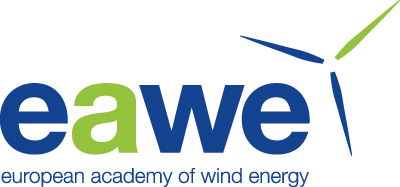Research article
|
08 Oct 2024
Research article |
|
08 Oct 2024
Influences of lidar scanning parameters on wind turbine wake retrievals in complex terrain
Rachel Robey and Julie K. Lundquist
Viewed
Total article views: 1,840 (including HTML, PDF, and XML)
HTML
PDF
XML
Total
BibTeX
EndNote
1,288
313
239
1,840
88
98
HTML: 1,288
PDF: 313
XML: 239
Total: 1,840
BibTeX: 88
EndNote: 98
Views and downloads (calculated since 22 Feb 2024)
Month
HTML
PDF
XML
Total
Feb 2024
102
26
3
131
Mar 2024
92
19
2
113
Apr 2024
96
10
8
114
May 2024
70
11
1
82
Jun 2024
23
8
2
33
Jul 2024
13
9
4
26
Aug 2024
16
2
2
20
Sep 2024
12
6
0
18
Oct 2024
135
23
10
168
Nov 2024
46
14
8
68
Dec 2024
52
8
102
162
Jan 2025
37
15
78
130
Feb 2025
40
7
1
48
Mar 2025
25
8
0
33
Apr 2025
31
18
0
49
May 2025
33
8
3
44
Jun 2025
57
37
6
100
Jul 2025
41
11
1
53
Aug 2025
51
11
0
62
Sep 2025
166
20
1
187
Oct 2025
55
19
3
77
Nov 2025
84
21
4
109
Dec 2025
11
2
0
13
Cumulative views and downloads
(calculated since 22 Feb 2024)
Month
HTML views
PDF downloads
XML downloads
Feb 2024
102
26
3
131
Mar 2024
194
45
5
244
Apr 2024
290
55
13
358
May 2024
360
66
14
440
Jun 2024
383
74
16
473
Jul 2024
396
83
20
499
Aug 2024
412
85
22
519
Sep 2024
424
91
22
537
Oct 2024
559
114
32
705
Nov 2024
605
128
40
773
Dec 2024
657
136
142
935
Jan 2025
694
151
220
1,065
Feb 2025
734
158
221
1,113
Mar 2025
759
166
221
1,146
Apr 2025
790
184
221
1,195
May 2025
823
192
224
1,239
Jun 2025
880
229
230
1,339
Jul 2025
921
240
231
1,392
Aug 2025
972
251
231
1,454
Sep 2025
1,138
271
232
1,641
Oct 2025
1,193
290
235
1,718
Nov 2025
1,277
311
239
1,827
Dec 2025
1,288
313
239
1,840
Total article views: 1,125 (including HTML, PDF, and XML)
HTML
PDF
XML
Total
BibTeX
EndNote
792
122
211
1,125
49
68
HTML: 792
PDF: 122
XML: 211
Total: 1,125
BibTeX: 49
EndNote: 68
Views and downloads (calculated since 08 Oct 2024)
Month
HTML
PDF
XML
Total
Oct 2024
128
15
8
151
Nov 2024
45
8
8
61
Dec 2024
51
3
101
155
Jan 2025
35
7
78
120
Feb 2025
34
4
1
39
Mar 2025
22
3
0
25
Apr 2025
28
12
0
40
May 2025
27
7
3
37
Jun 2025
50
12
5
67
Jul 2025
35
9
1
45
Aug 2025
50
8
0
58
Sep 2025
154
10
1
165
Oct 2025
47
8
3
58
Nov 2025
75
14
2
91
Dec 2025
11
2
0
13
Cumulative views and downloads
(calculated since 08 Oct 2024)
Month
HTML views
PDF downloads
XML downloads
Oct 2024
128
15
8
Nov 2024
173
23
16
Dec 2024
224
26
117
Jan 2025
259
33
195
Feb 2025
293
37
196
Mar 2025
315
40
196
Apr 2025
343
52
196
May 2025
370
59
199
Jun 2025
420
71
204
Jul 2025
455
80
205
Aug 2025
505
88
205
Sep 2025
659
98
206
Oct 2025
706
106
209
Nov 2025
781
120
211
Dec 2025
792
122
211
Total article views: 715 (including HTML, PDF, and XML)
HTML
PDF
XML
Total
BibTeX
EndNote
496
191
28
715
39
30
HTML: 496
PDF: 191
XML: 28
Total: 715
BibTeX: 39
EndNote: 30
Views and downloads (calculated since 22 Feb 2024)
Month
HTML
PDF
XML
Total
Feb 2024
102
26
3
131
Mar 2024
92
19
2
113
Apr 2024
96
10
8
114
May 2024
70
11
1
82
Jun 2024
23
8
2
33
Jul 2024
13
9
4
26
Aug 2024
16
2
2
20
Sep 2024
12
6
0
18
Oct 2024
7
8
2
17
Nov 2024
1
6
0
7
Dec 2024
1
5
1
7
Jan 2025
2
8
0
10
Feb 2025
6
3
0
9
Mar 2025
3
5
0
8
Apr 2025
3
6
0
9
May 2025
6
1
0
7
Jun 2025
7
25
1
33
Jul 2025
6
2
0
8
Aug 2025
1
3
0
4
Sep 2025
12
10
0
22
Oct 2025
8
11
0
19
Nov 2025
9
7
2
18
Dec 2025
0
Cumulative views and downloads
(calculated since 22 Feb 2024)
Month
HTML views
PDF downloads
XML downloads
Feb 2024
102
26
3
Mar 2024
194
45
5
Apr 2024
290
55
13
May 2024
360
66
14
Jun 2024
383
74
16
Jul 2024
396
83
20
Aug 2024
412
85
22
Sep 2024
424
91
22
Oct 2024
431
99
24
Nov 2024
432
105
24
Dec 2024
433
110
25
Jan 2025
435
118
25
Feb 2025
441
121
25
Mar 2025
444
126
25
Apr 2025
447
132
25
May 2025
453
133
25
Jun 2025
460
158
26
Jul 2025
466
160
26
Aug 2025
467
163
26
Sep 2025
479
173
26
Oct 2025
487
184
26
Nov 2025
496
191
28
Dec 2025
496
191
28
Viewed (geographical distribution)
Total article views: 1,840 (including HTML, PDF, and XML)
Thereof 1,811 with geography defined
and 29 with unknown origin.
Total article views: 1,125 (including HTML, PDF, and XML)
Thereof 1,115 with geography defined
and 10 with unknown origin.
Total article views: 715 (including HTML, PDF, and XML)
Thereof 696 with geography defined
and 19 with unknown origin.
Total:
0
HTML:
0
PDF:
0
XML:
0
Total:
0
HTML:
0
PDF:
0
XML:
0
Total:
0
HTML:
0
PDF:
0
XML:
0
Latest update: 03 Dec 2025




